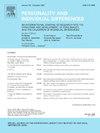The role of threat sensitivity, social affiliation, and left-behind experience in shaping adolescent callous-unemotional and borderline personality traits
Abstract
Exploring callous-unemotional (CU) and borderline personality disorder (BPD) traits during adolescence is crucial due to its role in the emergence of personality pathologies. Recent research highlights threat sensitivity and social affiliation as fundamental factors in the etiology of broader interpersonal dysfunctions in personality disorders. Further studies are needed to explore the contributions of these factors to CU and BPD traits, while considering specific parental risk factors within distinct cultural contexts. This study examines the effects of threat sensitivity, social affiliation, and left-behind experience (LBE) on CU and BPD traits in 563 Chinese adolescents. We found that the interaction between threat sensitivity and social affiliation significantly predicts CU traits in adolescents without LBE, where reduced social affiliation amplifies the association between low threat sensitivity and CU traits. Conversely, LBE and a strong need for social affiliation intensify the association between increased threat sensitivity and BPD traits. These findings highlight the specific contributions of dispositional factors to CU and BPD traits, offering insights into their divergent pathways. By elucidating the nuanced interplay of dispositional and parental risk factors, this study enhances our understanding of the predictors of adolescent personality disorders and emphasizes the need for targeted interventions tailored to these dynamics.

 求助内容:
求助内容: 应助结果提醒方式:
应助结果提醒方式:


